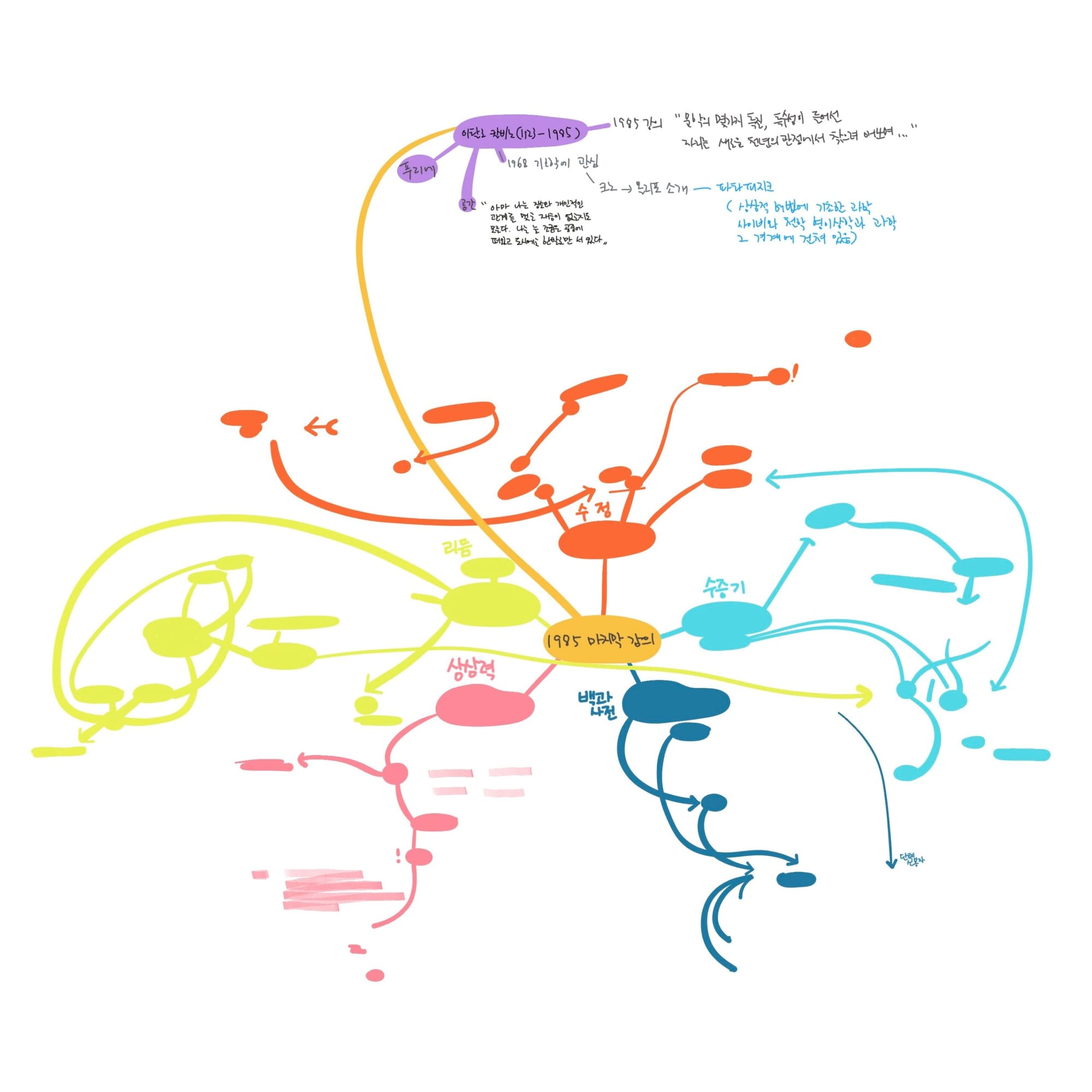A Note from Notes from Calvino

As part of my study on the Oulipo, I read Italo Calvino’s book Six Memos for the Next Millennium (1988). This book revolves around five topics Calvino prepared for the lecture at Harvard University in 1984, following Charles Eliot Norton’s poetry lectures. The five topics include Lightness, Quickness, Accuracy, Visibility, and Multiplicity (Consistency was the unfinished sixth topic).
I will discuss his Six Memos in the next post, but for today, I would like to reflect on my notetaking. First of all, I note that this note followed the Korean translation, which includes Calvino’s other unfinished note Cominciare e finire (Beginning and Finish), which will be partially formed in his last sixth topic, Consistency:
- Calvino, Italo (2022) 이탈로 칼비노의 문학 강의: 새로운 문학의 길을 찾는 이들에게. Translated by 현경, 이. 서울: 에디토리얼.

As Calvino gradually revealed symbolic form for each topic, I noted in my diagram, such as “Vapor,” “Rythm”, “Imagination”, “Crystal”, and “Encyclopedia”, the lines and colours of the diagram were chosen before I even started to read. Therefore, after I finished, it was surprising to see how well those doodles fit with the topics. For instance, the crystal part was drawn in orange. It starts with three central circles and small circles attached to them. The other circles are not particularly connected to those three circles but, in some ways, show similar patterns.
The other example is” Rhythm”, which is coloured yellowish green on the left side. Its central theme is the tension between the continuity and discontinuity of the time or speed of the matter and the inner mind presented as the “Quickness”. Most of the left side lines are somehow connected, while the other short lines on the right are disconnected from the main circle. Other topics are similar to those I indicated beforehand. Those doodles are not predesigned but formed through the reading. I wonder if Calvino wrote this lecture note following his inner visibility or the precise and logical structure, or instead, if it was produced by the tension between them?
In his last note, Cominciare e finire (Beginning and Finish), he explains the starting point of writing a lecture note. For him, the starting point of the lecture is equally vital as starting moment in novel writing. This is the moment for the department to see the infinite and diverse possibilities. A given synthetic world that has no before or later, a world that remains in personal memory, a world that contains potential. Every time, the starting of the writing is the moment of the department from the possibilities.

It might be overly focused on structure instead of the value of the lecture notes. Calvino’s six values in literature, Lightness, Quickness, Exactitude, Visibility, and Multiplicity, were the values he wanted to continue in the new millennium. I believe those are not only for literature but also for the creation of human activities, which includes moving image practice. Although the techniques and qualities of literature writing are different from moving image making, the values of making are shared as part of the core of the creative act.
Then, the questions will be:
- How can those six values be implemented or applied in moving image practice?
- Do six values impact technological value?
- What example can I draw from here?
I will discuss those questions in the next post. In the meantime, I also read some of Calvino’s novel references, including Invisible Cities (1972), Jorge Luis Borges’s The Garden of Forking Paths (1941), Saturn and Melancholy (1964), Honoré de Balzac’s The Unknown Masterpiece (1831), and Thomas De Quincey’s The English Mail-Coach (1849). Additionally, Carlo Emilio Gadda’s That Awful Mess on Via Merulana (1957).
Until then,

